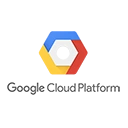Google Cloud Data Studio is a free business intelligence and data visualization tool that allows you to create interactive reports and dashboards. In this guide, we'll cover the key concepts and use cases of Data Studio and provide a sample code snippet for creating a basic data visualization using Data Studio.
Key Concepts
Before we dive into the code, let's understand some key concepts related to Google Cloud Data Studio and data visualization:
- Reports and Dashboards: Data Studio allows you to create reports and dashboards that provide visual representations of your data. You can add charts, tables, and other elements to display information.
- Data Sources: Data Studio can connect to various data sources, including Google Sheets, Google Analytics, BigQuery, and more. You can use these sources to populate your reports with data.
- Interactive Elements: Data Studio supports interactive elements like filters and date ranges, allowing users to interact with the data and explore it dynamically.
Sample Code: Creating a Basic Data Visualization
Here's a sample code snippet for creating a basic data visualization using Google Cloud Data Studio. To use this code, you need to have a Data Studio account and access to data sources:
1. Log in to Google Data Studio.
2. Create a new report.
3. Add a data source, such as a Google Sheets document or BigQuery dataset.
4. Create a new chart or table.
5. Configure the chart to use your data source and select the dimensions and metrics you want to visualize.
6. Customize the appearance of the chart with labels, colors, and styles.
7. Save the report and share it with others.
This code is a set of steps for creating a basic data visualization using the Data Studio user interface. You can follow these steps to create your own data visualization reports and dashboards.
Conclusion
Google Cloud Data Studio is a valuable tool for data visualization and reporting. By understanding the key concepts and using the provided steps, you can create interactive and informative data visualizations to communicate insights effectively with your audience.

